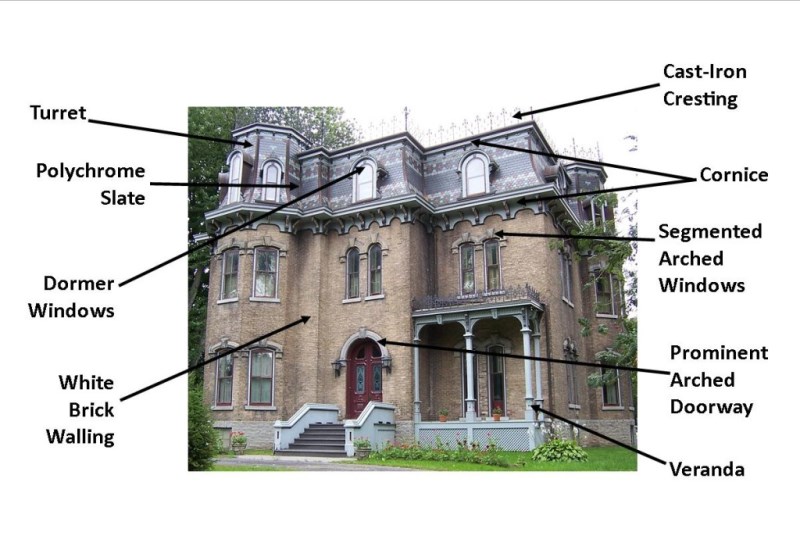This imposing house is a fine example of the Second Empire style which was popular in Canada in the 1870s and 1880s. Local architect Thomas Hanley skillfully blended the characteristic Second Empire mansard roof and its ornate dormer windows with asymmetrical massing, a bracketed cornice and iron cresting to create an image of picturesque elegance. The profusion of ornate woodwork and decoration inside the house complement its stately exterior. Built in 1882-1883 for wealthy banker and financier, J.P.C. Phillips, Glanmore reflects the tastes of the well to do in late 19th century Canada.
-Historic Sites and Monuments Board of Canada
Glanmore was designated a National Historic Site of Canada for its outstanding Second Empire architecture. It is included in the Parks Canada Directory of Federal Heritage Designations.
The Second Empire style of architecture began in France during the reign of Napoleon III (1852-1870). This was known as the Second Napoleonic Empire. During this period much of Paris was rebuilt with wide avenues and tall buildings featuring mansard roof lines.
The construction of this style of building spread to North America where it was used in grand public buildings and elegant residences. It was most popular in the North-Eastern parts of the United States and Canada in the 1870s and 1880s.
It is a style that allowed architects to freely add a variety of decorative features to the exterior. Typical elements include:
- asymmetrical facade;
- mansard roof line with molded cornices above or below the lower slope;
- multi-coloured slate roof tiles arranged to show a pattern;
- bracketed eaves;
- cast-iron cresting along the top of the roof line;
- front tower or bay that projects up above the roof line;
- dormer style windows;
- and a large, rounded double front door.
Glanmore's Second Empire design features a slightly curved mansard roof of patterned slate, ‘white' brick walling, and full height bays that extend above the roof line as turrets. The arched dormers have scrolled woodwork embellishments. The upper cornice and intricate cast-iron cresting set off the slate work featuring colourful rosettes.


